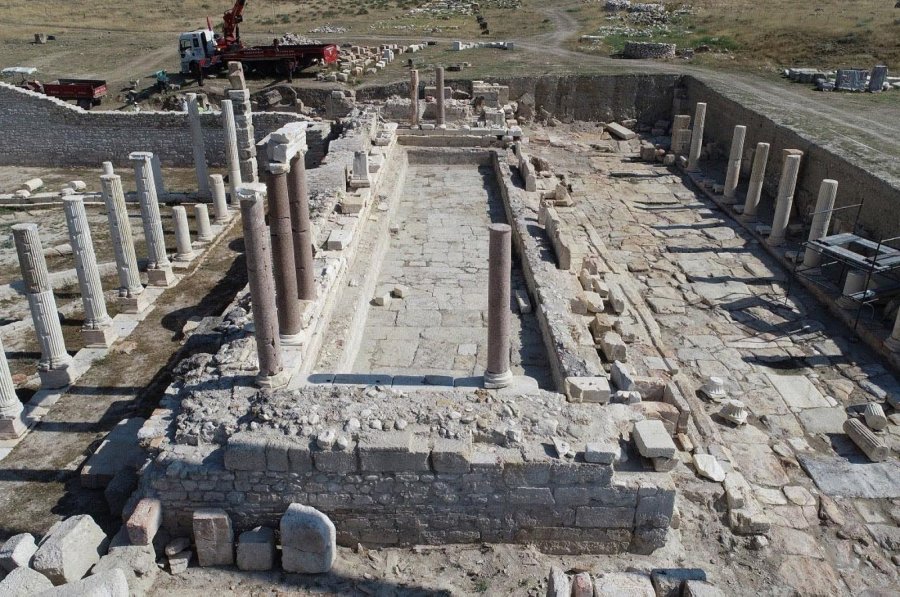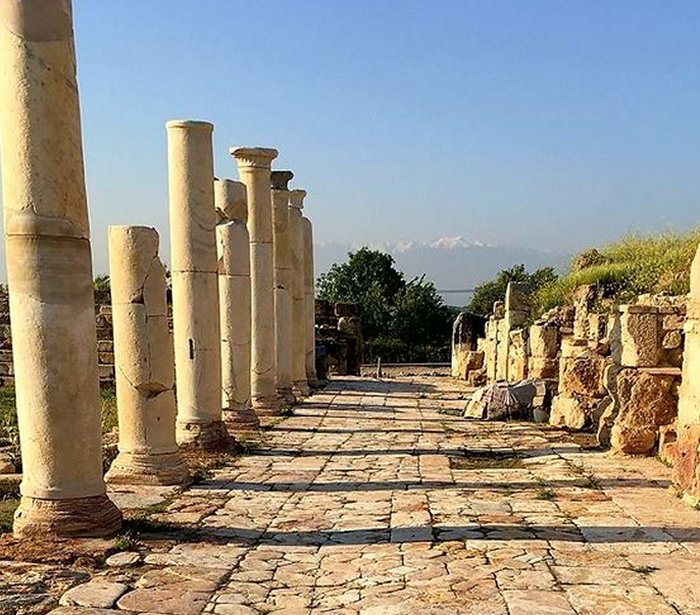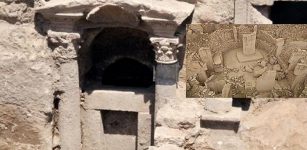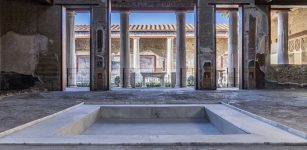Massive 2nd-Century Fountain In Turkey’s Ancient City Of Tripolis Will Be Soon Restored
Conny Waters - AncientPages.com - As soon as the excavation works will be completed, the archaeologists begin the restoration of Tripolis’ ancient fountain, one of the city's landmarks.
"We are planning to finish all works by the end of this year," Bahadır Duman, associate professor at Pamukkale University (PAU)' s Archeology Department informed.
 A general view of the monumental fountain, estimated to date back to the second century A.D, in the ancient city of Tripolis, Denizli, western Turkey, July 24, 2020. DHA Photo
A general view of the monumental fountain, estimated to date back to the second century A.D, in the ancient city of Tripolis, Denizli, western Turkey, July 24, 2020. DHA Photo
A monumental fountain that is dated back to the second century AD was discovered during excavations, initially launched in 2012 by Pamukkale University (PAU), the South Aegean Development Agency (GEKA), and the Culture and Tourism Ministry.
The fountain was adorned with the statues of important rulers of the time and their wives as well as various gods and goddesses worshiped in the city during that period. One of them was the goddess Latona, the mistress of Zeus and the mother of Apollo and Artemis. At that time, the coins minted in Tripolis were decorated with the head of Latona, whose Greek equivalent was Leto,
The well-preserved U-shaped fountain is 32 meters (105 feet) long, 15 meters (49 feet) high and 7 meters (23 feet) wide and is located at the center of the ancient city.
Tripolis is an ancient city situated on the Büyük Menderes River in western Turkey's Denizli province, about 40 kilometers (25 miles) north of Denizli city center.
 The ancient city of Tripolis, Turkey. source
The ancient city of Tripolis, Turkey. source
'It was important riverside commerce and agricultural center in the ancient Lydia region, and played a crucial role in providing transportation between Karia, Phrygia, and Tripolis,' reports Daily Sabah.
The ancient Tripolis - a part of ancient Phrygia - was once one of the richest cities in the region due to its strategic location. Its long history begins at least in the 4th millennium BC. The city's development reached its peak during the Hellenistic period.
After the 2nd century AD, many streets, a theatre, baths, stadium, and city council were built and the city flourished.
However, it ended because the city’s strategic location was sometimes beneficial and other times – disadvantageous.
See also: More Archaeology News
At the beginning of the fourteenth century, for example, the entire region was an area of serious confrontations between the Byzantine Empire and the Turkish tribes. At last, Tripolis came under the rule of the Ottoman Empire in 1429.
In the fourth century, it underwent a comprehensive restoration, which has greatly contributed to efforts to reach little-known information about the transition from Roman to Byzantine architecture.
The monumental fountain is now under restoration.
Written by Conny Waters - AncientPages.com Staff Writer




















